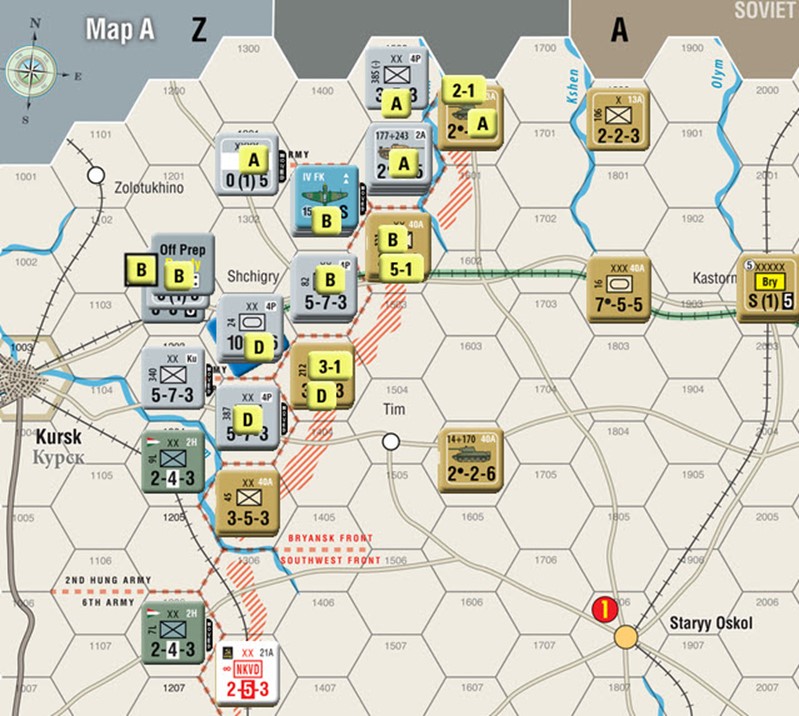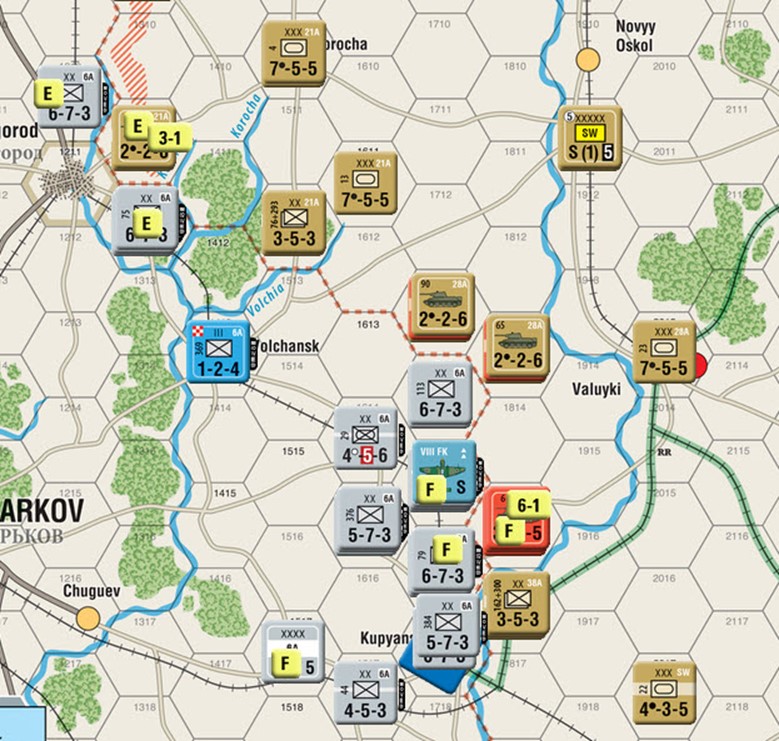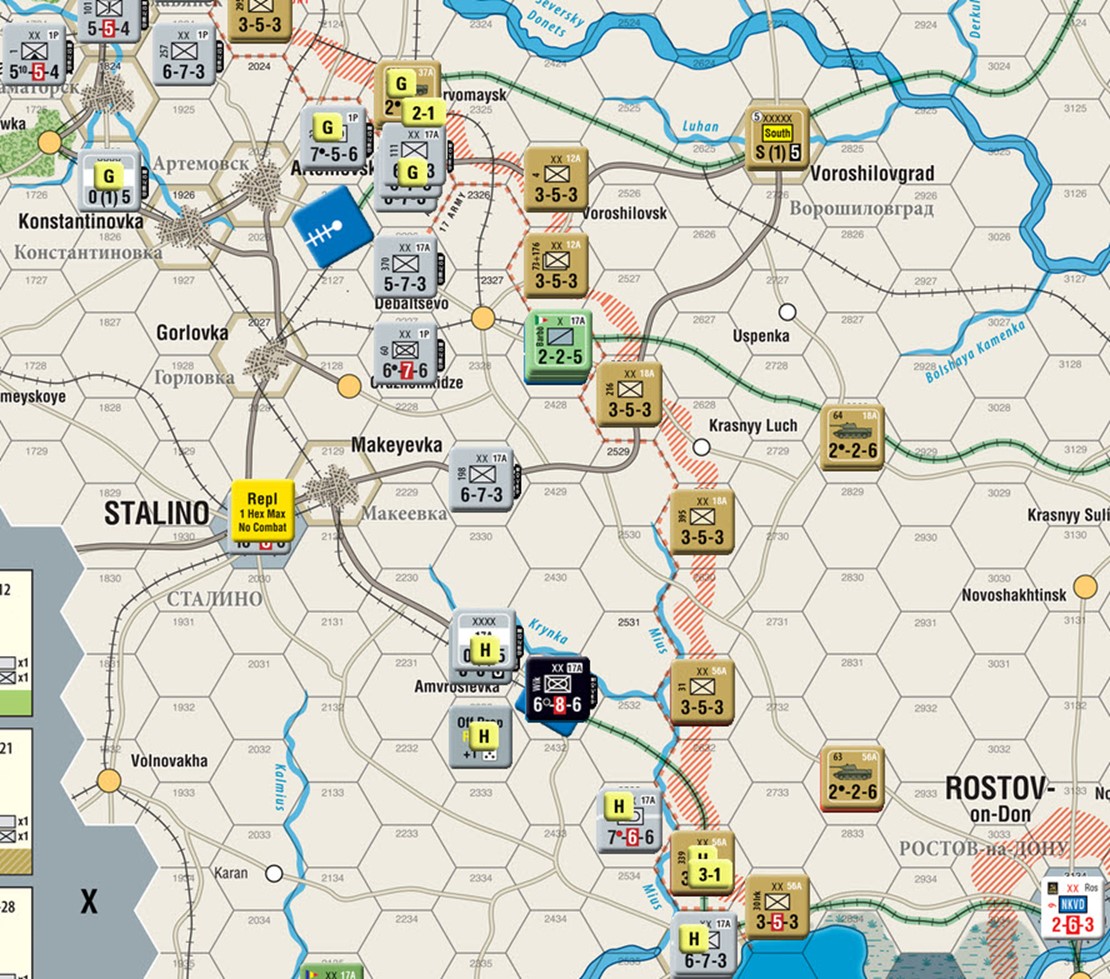One of the side benefits of having to start over three times, is we get to refine or reassess our ‘opening gambit’.. a LOT.
I’ve attacked two or three primary areas each time, and added a few lower odds attacks in the opening to spice things up.
Partly out of frustration with FUBAR-ing this game play for my opponent. Dude is super patient. I’d of fired me by now. The other thing we now know is our opponent is a bit offensively minded as he executed a couple of risky counter attacks. Which ended up costing him dearly in turns two and three of our first play. Note to the wise to not leave much in the back field or too exposed.

Taking a 2:1 at the open furthest North is a risk.. I know, I know. WTH #rolldice right?
We put a 5:1 on the primary route of advance and a nice 3:1 [please, please no d1/a1 results.. I HATE THOSE.]
My opponent is going to roll the dice and retreat his dudes then pass over to me. Makes for less files swapped. I do need to remember to provide details on ORDER of resolution next time. This turn it should not matter.

Center – a small 3:1 in the north -center. The big attack is against the open ground Guards units who can elect to DD if needed, but we got a 6:1 so Im hopeful we smash the snot outta them and break thru to Valuki for a quick VP. Even if it’s a risky attack. I’ll swap an armor step for a VP any day, especially on turn 1.

The south… well beside neglecting to move the woggoes not much going on. I need to be able to move and hit. So we pull some units out of ZOCs and run jus the two attacks per the above image.
We now await his file and lets pray the VASSAL die roller finds a 6 streak!
Nice little write-up.
Stalingrad ’42 qualifies as a “neo-classic” so those opening gambits bear examination and trial. I take it those yellow lettered markers are there to delineate all units taking part in any one combat, and the little odds marker is the attacker’s determination of what the final odds are? Nice device for a pbem game.